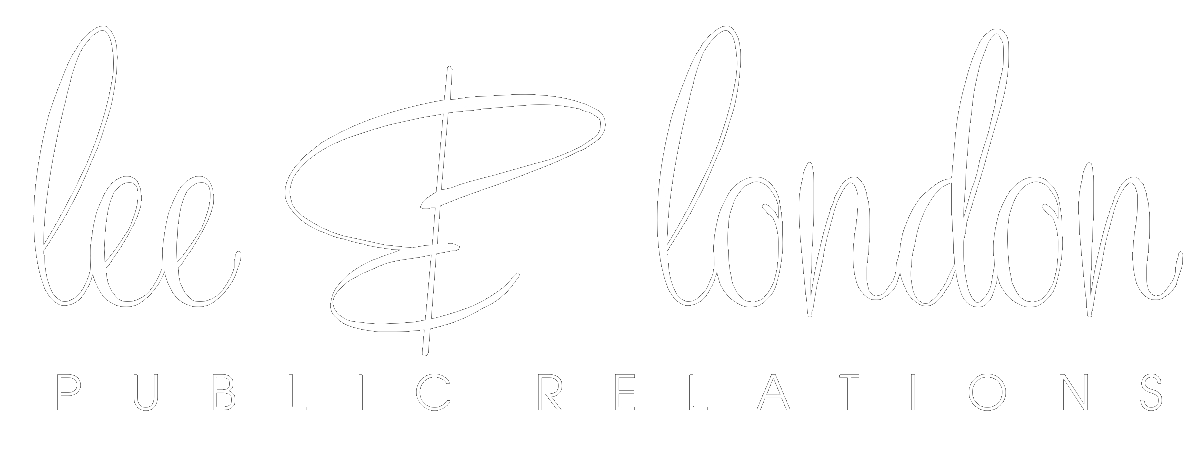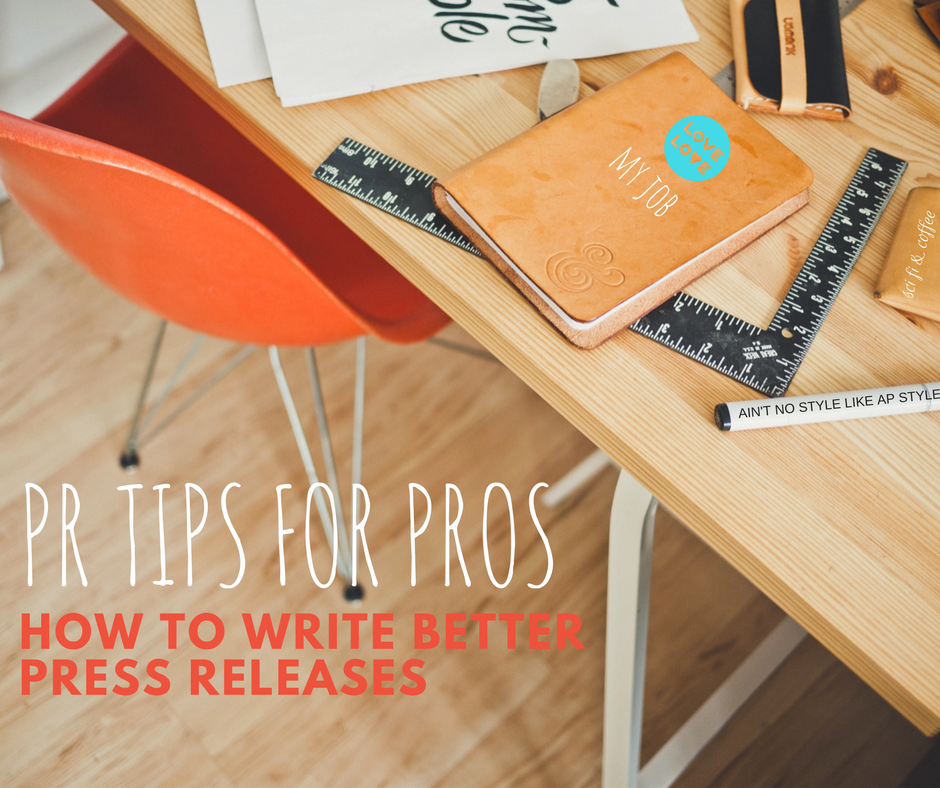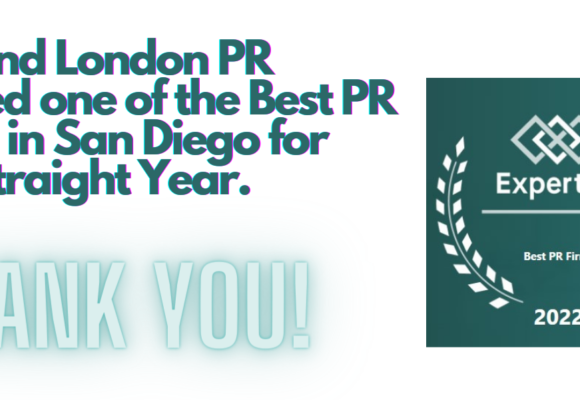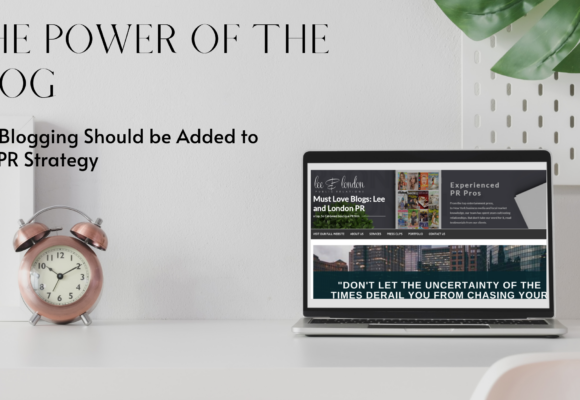In this edition of PR Tips for Pros, we give 5 easy tips to help you write better press release headlines.
One of the key components of a PR person’s career is writing press releases. By the time you reach your 10 year anniversary, you will likely have written hundreds of drafts. Press release headlines are funny things: sometimes they just come to you as if by magic. Other times they are miserable garbage monsters that suck the life out of you. Over the years, and after many, many garbage monsters, I finally devised a way to make writing press release headlines easy every single time!
1. Think Like a Reporter and Write a Quick Draft

Whenever I write a press release headline, I immediately take off my PR hat (a flouncy sun hat) and put on my reporter cap (a weathered baseball cap). Thinking like a reporter will force you to identify the most important and compelling information that will be contained in your release. This may (probably) be different from what your client told you was the most important information. Don’t take their word for it, ask yourself, “What’s the most interesting and useful thing about this announcement?” If after putting on your reporter cap you realize there is a better, more newsworthy aspect of the release that should be put in the headline – then you are a winner! Now before you scare the client, you need to see this out. Get it all down before sharing it piecemeal. It’s like serving someone parts of an amazing dinner before the actual dinner. If you serve a carrot soup first and your client hates carrots, you are screwed. But if you had waited and served them a delicious meal that yes, included carrot soup but there was also pie and roast beef and mashed potatoes…..well, they would have reacted differently, right? So don’t get approval in pieces, do it at the end. Now, go ahead and write a first headline draft. Make the headline long – it’s okay. At this point you are just kind of vomiting up words (ewww) based on the limited info you have. Once you’ve got your first headline draft, go through and play with the wording until you get something that reasonably resembles a headline. Let’s pretend our client is LatherUpMyFace, an online soap company that tasks you with writing a press release to announce it has reached a milestone of 10,000 soaps sold since May (6 months ago). Without any additional info, and thinking like a reporter, your headline might look like:
Online Face Soap Company LatherUpMyFace Hits Milestone: 10,000 Units Sold Since May
Basic, but covers all the relevant information you have. Now time to do some digging.
Do Your Research – Know What You are Writing

You have a fact: sales have increased a lot in a short time period. Now you need to ask why. Is the industry growing as a whole? Is there some new study released that supports the benefits of using soap – or a particular ingredient in your soap? Is there a story here about outpacing the competition — Are competitors posting losses, while your client is posting profits? Is this a good time for a business success story or entrepreneurial profile piece? Is there an opportunity for a David vs Goliath story: new soap company rising up and beating the odds to claim market share? Is there a “National Soap Day” coming up? How about a “National Face Day?” Guaranteed there will be some relevant day that ties into your news. Know what it is and decide if it’s worth using. If so, is that a separate announcement/campaign or something that could be tied into this sales announcement?
So now you’ve done your industry research and you found out some cool stats that tell you your company is now number one in the industry for sales. You also find out there was a study released 6 months ago that talked about how awesome planktonium (an ingredient in your company’s cream) is for removing body hair. Did your CEO tell you any of these things? Of course not. That would make our job too easy; it’s the challenge that makes it great (opens 3rd bag of potato chips). That’s why it’s our job to do the research. And look, it paid off! Now we’ve got some newsy bits. Time to:
3. Know What the Industry Reporters Are Covering

What are the face cream reporters covering? Go read their last 3-5 pieces on the industry and see what their insights are and how your announcement could relate to what they are working on. OR, maybe you discover a reporter who never writes about milestones or sales figures. But he does write about industry studies and how they impact sales. You get the idea – research is where you will determine the best approach to take in your press release. So instead of a simple, Online Face Soap Company LatherUpMyFace Hits Milestone: 10,000 Units Sold Since May, you have the research to give it some meat with something like:
4. So What? What’s Next?

Now, after reading that headline and subhead, what are the natural questions that come to you? How will they keep up this growth once the buzz around the study wears off, are they a flash-in-the-pan? Do they have plans for other products, perhaps expanding the business beyond face soap or into other sales channels? These are the questions reporters will want to know — “LatherUpMyFace Sales are Up, But Can They Maintain Momentum?” is an example of a headline that could result from your release if you don’t answer the “what’s next” question. So think like a reporter, and always ask “what’s next?”
So now it’s time to sit down with (or call, e-mail) the CEO and ask him the “what’s next” question. You’ve done all your other research so you can ask him related questions. From this meeting, you learn the crucial information that the company is planning to build a new warehouse and start selling in retail now that they are crushing it online. Your response is, “Are you f’ing kidding me? Why didn’t you bother telling me this last month at our PR meeting? Sonofa… ” But in reality you just say “thanks for your time,” and you pick up an extra gallon of ice cream on the way home. Yes, It would be great if your client had shared that information with you upfront, but it doesn’t always happen. Many times PR people find out late in the game, or only after asking questions. This is another reason why thinking like a reporter and asking/answering all these questions before you begin writing your release is beneficial – it will keep you and your client in sync. (ain’t no lie). So now you’ve gleaned some important information about the company’s future plans. Let’s find a place for it. You could add it to the subhead:

So that’s how it could look if you add it to the subhead. Nice, right? It’s also written more like a reporter would write it and less like a PR person. When you write like a reporter first, it makes it easier to go back and edit like a PRo ( shorthand for PR Professional). That’s when you can pump up some of the language and give it that “excitement” that clients always want. But by writing it first thinking as a reporter, you will end up with a less fluffy piece and a more newsy one. It may take your client some getting used to, but the responses you’ll receive should quell any naysayers quickly.

And don’t feel too badly if they make you put in 25 stupid adjectives that add no meaning at all (deep breath). It’s a constant battle, re-fought with each new client. Keep up the good fight!! But in this example, the CEO eyes retail is something a reporter would write and not something a company would say.
So now that we have some crucial new pieces of intel (remember – you only learned about it by peppering the CEO with questions) let’s see if they make more sense in the main headline or the subhead.
It’s easy to see there is some flowery/market-y language here which attracts attention but doesn’t necessarily add to the credibility of the release. The line “crushes competition” is great for drawing people in but isn’t totally necessary. So in this case, I might move one of the key new facts here and see how it reads.

Now the first headline is waaaay too long. And it’s kind of a run-on sentence (Three prepositions? What are you thinking? Go get some coffee). So we could either try and edit it to make it shorter or we could see if we like it better if we move the warehouse and expansion plans down to the subhead. In addition to nixing “crushes competition,” I also added the “grab foothold” line and the words “competitive” and “skyrocket” to more clearly illustrate that this was a FEAT that should be given attention. (The PR sunhat does come in handy sometimes as it tells you the best way to communicate something) Could I have used “climb?” Yes, and I considered it, but in this case Skyrocket gives it the importance that I feel climb does not. If this were a real client, I would ensure that the sales rate was indeed indicative of a “skyrocket” as opposed to just a strong increase. Being truthful and accurate is important in press releases to maintain credibility. While editors certainly expect some superlatives thrown around, be careful you don’t over sell.
So now we are down to two options – one with the retail expansion in the main headline, and now here is the version with the new info in the subhead:

That definitely looks better. But now for my final trick:
5. Flip Your Headlines
So once I have my headlines where I think I want them, I take a final step and that is to completely flip them: make the headline the subhead and the subhead the headline. Nine times out of 10, I prefer it the new way. In our face soap example, it would look like this:


And there it is! For some reason I’ve always found that PR subheads tend to be stronger than PR headlines. I think it’s usually because PR people feel like they need a soft or cutesy introduction to the release. And I”ll admit, there have been many times I’ve done that very thing. Sometimes it works; it just depends on the type of release you are writing. But in this case, we had legitimate news that would be compelling to media. Figuring out the order to put the news and supporting facts in, is where practice and experience show their value.
So next time you are writing a release try some of these tips and let me know how they work for you!
Thanks for reading,
Brendi
Oh, and if you want to buy that awesome coffee mug, it’s just $16. Go HERE





